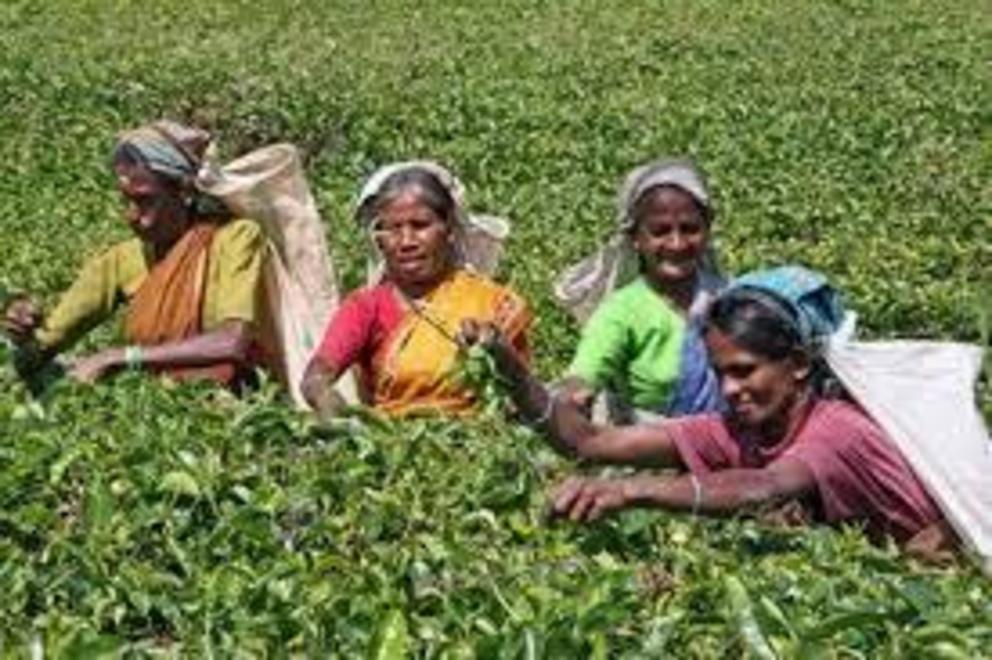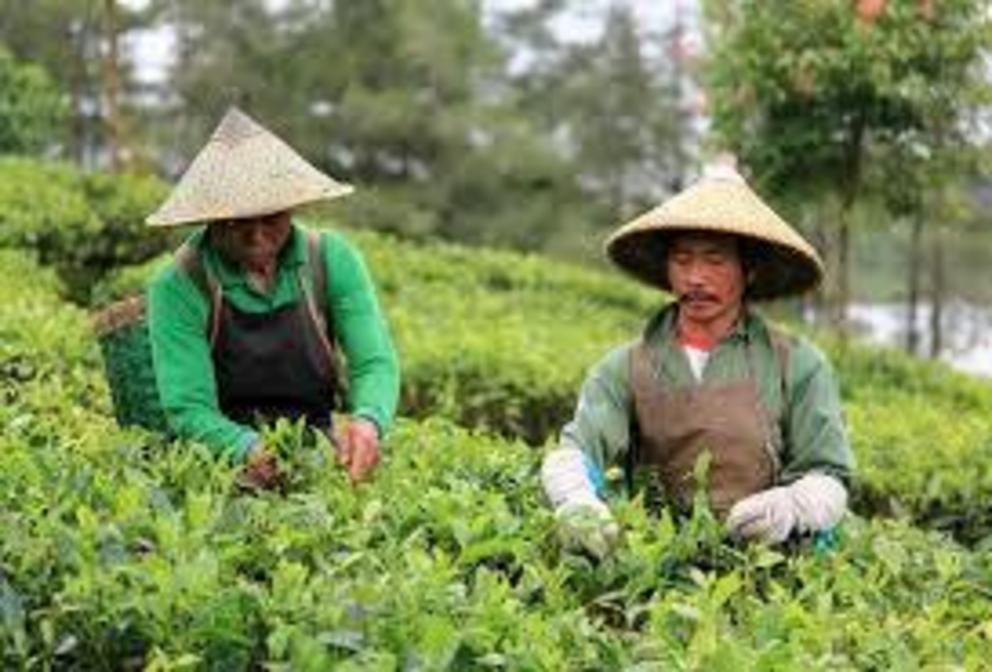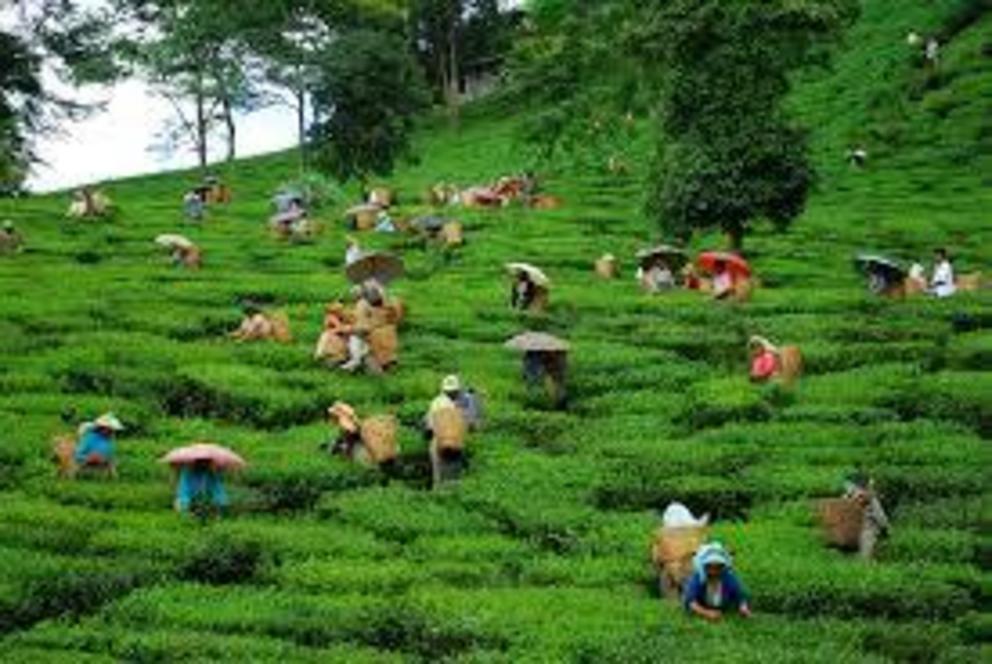The dark side of the global tea industry
Aside from pure water, drinking high quality tea can be a healthy beverage option. Many teas contain polyphenol antioxidants recognized for their disease prevention and antiaging properties. For example, research1,2 has shown long-term tea intake can improve your blood pressure.
One systematic review of 25 randomized controlled trials found those who regularly drank either green or black tea for 12 weeks had an average of 2.6 mm Hg lower systolic blood pressure and 2.2 mm Hg lower diastolic pressure compared to those who did not drink tea.
Green tea provided the best results, followed by black tea. According to the authors, this reduction "would be expected to reduce stroke risk by 8 percent, coronary artery disease mortality by 5 percent and all-cause mortality by 4 percent at a population level…" Just how much tea would you need to drink to get these kinds of benefits?
Research suggests an ideal amount is around three to four cups of tea per day.3 For example, one 2007 study4 found "clear evidence" showing that three or more cups of tea — in this case black tea — reduced the risk of heart disease.
But for all their health boons, tea has its dark sides. Erik Hane's 2018 DW documentary "Bitter Cup: The Dark Side of the Tea Trade," investigates some of the lesser-known facets of India's tea industry, which is typically staffed by underpaid workers forced to live under dismal conditions.
Few are also aware of the health ramifications these workers face, as they're frequently exposed to toxic pesticides — or that most teas, including the most prized, are contaminated with these chemicals. Quality certification also has its problems, and is no guarantee that workers are paid and treated fairly.
Darjeeling — The Champagne of Tea

"What is the true cost of tea?" the film asks, "And are Indian workers the ones paying the price?" In Germany, tea appreciation is on the rise. Tea taster Henning Schmidt holds weekly lectures, teaching people about the finer aspects of tea drinking. Whereas bagged tea used to be the norm, more and more people now want a more refined experience with their tea, and are moving toward loose teas.
"Aficionados brew tea according to a very strict ritual," Hane says — techniques that help bring out the flavor and aroma of the tea. Along with this new appreciation for tea comes a willingness to pay more for high-quality tea leaves. According to Schmidt, high-quality tea costs between 20 euros and 30 euros ($23 to $35) per 100 grams. The most expensive tea available can go as high as 60 euros ($70) for 100 grams.
One of the most prized teas in the world — often referred to as "the Champagne of tea" — grows in Darjeeling in Northern India. The tea is grown high in the Himalayan mountains, and many believe it's this unique growing location that makes Darjeeling tea so special. Because of the intense sun exposure, the leaves grow slower than in lower regions, and this slower growth rate is thought to be part of the formula that gives the tea its distinctive flavor.
It's steep price tag is also due to the fact that everything has to be done by hand. The steep hillsides cannot accommodate machinery, and the physical labor that goes into every facet of the tea's production adds to the final price. That, at least, is the justification offered by vendors in the West. In reality, locals in Darjeeling do not appear to be profiting from the region's tea production. In Darjeeling City, poverty and unemployment rates are high, and migrant workers live in the slums, located in the city center.
Darjeeling Tea Pickers Fight for Living Wage

Hane interviews Suraj Subba, the leader of the local tea trade union. According to Subba, Darjeeling tea pickers get paid just 1.70 euros ($1.98) per day. The union is pushing for a living wage, which would be at least twice as much. From this meagre income, workers must pay for housing, food, clothing, school fees and educational material for their children, health care and everything else a person might need for daily living.
Picking tea is backbreaking work. Seven o'clock each morning, the workers start picking tea leaves by hand, baskets suspended from their forehead across their backs to keep both hands free. A local tea picker comments, "Picking tea might not be a very complicated job, but it's extremely tiring."
To earn their daily wage, the workers must also reach the daily quota, which can range from 8 to 20 kilos (17.6 to 44 pounds) depending on the time of the season. Here in the mountains, there are no other jobs, so there's no competition for workers. Moreover, in order to have the privilege of paying to live on the plantation, you have to work there.
The highest quality teas are whole leaf, which have the best flavor and strongest aroma, followed by broken leaf. Bagged teas typically contain the lowest grade tea. Fraud exists in the tea trade as in most others, and large quantities of tea are fraudulently sold as Darjeeling each year. This only adds to the problems facing those trying to make a living in Darjeeling, as it affects both the price and reputation of their tea.
Can You Trust Quality Seals?
There are a number of different certifications meant to assure consumers that fair trade and environmentally friendly practices are observed, including:
- Fairtrade certification, which stands for fair wages and good working conditions
- Rainforest Alliance, aimed at conserving biodiversity and providing "sustainable livelihoods"
- UTZ certification, which stands for sustainable farming practices and better working conditions
The question is, do these seals deliver on their promises? In Assam, India's largest tea growing area, Hane visits the Tonganagaon plantation certified by all three of these organizations. As noted in the film, the higher prices consumers pay for products carrying these quality seals should translate into higher pay and better working conditions for the workers. The reality, however, does not match such expectations.
On the Tonganagaon plantation, the pickers with the highest yields in a year receive a bicycle. Of the 1,286 workers, 11 had received bicycles. The others receive nothing over and above their daily pay and a tin for holding rice. Each family is allotted a portion of rice, as they do not receive a living wage. A typical dinner is plain rice, boiled with plenty of salt and washed down with tea. The workers live in fragile huts made of bamboo and mud, and drink unpurified water from wells they themselves dug by hand.
There's no sewage system; they must use dugout latrine pits when they go to the bathroom — a situation that breeds mosquitoes and promotes malaria. These open latrines also contaminate the ground water. And yet, the tea estate is by law responsible for providing and meeting basic needs such as housing, potable water and toilets. When workers try to file a complaint with the manager, "they make us wait all day long, then say the manager doesn't have time to see us," one of the workers says.
UTZ Suspends Tonganagaon Tea Estate's Certification
As you'd expect, children are hardest hit by the poverty, malnutrition and unsanitary living conditions on these tea estates. Professor Anup Kumar Das with the Assam Medical College and Hospital treats tea workers, noting child malnutrition and mortality are very high in this area. Unsafe drinking water and lack of sanitation are primary causes of illness leading to death.
This is not the reality promised by Fairtrade, Rainforest Alliance and UTZ, the seals of which are supposed to ensure a living wage, social justice and humane working conditions. "How can this be?" Hane asks. In a written statement, Fairtrade replied: "Without a doubt, we are repeatedly confronted by massive problems in Assam.
But pulling out of the tea sector in Assam would only make the situation on the ground even more difficult …" Later, after the release of the film, Fairtrade withdrew its seal of approval for the Tonganagaon estate.
Rainforest Alliance responded to Hane's inquiry saying, "Insofar as they are confirmed by our own auditors, some of the grievances you depict will lead to the decertification of the plantations in question." UTZ was the only organization that took immediate action. It issued the following statement:
"Our staff in India have inspected the situation at the Tonganagaon tea estate and submitted their evaluation … As conditions there evidently remain inadequate and require further investigation, we have no option but to suspend the certification of the Tonganagaon tea estate with immediate effect."
Workers Exposed to Dangerous Pesticides
As it turns out, most tea plantations view these quality and social justice seals as little more than marketing tools, as many buyers will only purchase tea from estates with one or more of these certifications. As noted by Hane, "That's an approach that does the tea workers little good." Indeed, the plight of tea workers is not restricted to Tonganagaon. The situation is the same on most if not all quality certified tea estates in Assam.
Yet another plight of tea workers is having to apply toxic pesticides without even the most basic of protective gear. Acute poisoning and long-term health effects, including generational effects, are consequences these workers must face, whilst living in inhumane poverty. Consumers may also face health risks.
Testing of tea leaves taken directly from plantations in Assam and teas sold in German grocery stores, reveal the presence of pesticides in all samples — including some that aren't licensed for use in Germany. They even found a pesticide banned in tea farming in India. Whole tea from a plantation certified by Rainforest Alliance also had eight times the German legal limit of a particular pesticide. A take-home message here is that price and quality seals do not equate to a tea being pesticide-free.
"Pesticide residues in all tested samples, and the at-best dubious benefit of quality seals, the global tea trade has many losers, including European consumers, but no one has been left more vulnerable by its success than tea workers toiling in the estates of Darjeeling and Assam," Hane says in closing.
Matcha Tea and Tulsi — Two Superior Tea Choices
While Darjeeling may be the most popular, Matcha green tea from Japan may be a better choice if you're drinking tea for its health benefits and are concerned about pesticide residues. Matcha green tea has a wonderful flavor and superior nutrient content, as it has not been damaged through processing.
The best Matcha comes from Japan and is steamed rather than roasted or pan-fried. As a result, it retains all the nutrient-rich value possible from the tea leaf. As an added boon, the chlorophyll in Matcha acts as a natural detoxifier.
The whole tea leaves are ground into a fine powder, which you stir directly into hot water, resulting in a bright green beverage. A cold version option that is perfect for summer is Matcha lemonade. Simply dissolve the powder in hot water; chill, then add lemon or lime juice. A small amount of stevia can be added for sweetness. Serve with ice. The vitamin C from the citrus juice increases the benefits of green tea, as the ascorbic acid boosts the amount of catechins available for your body to absorb more than fivefold.5
Another delicious, healthy option is Indian Tulsi tea, which contains hundreds of beneficial phytochemicals. Working together, these compounds possess potential antioxidant, adaptogenic and immune-enhancing properties that can fight stress and help promote your general health in multiple ways, including:
- Bolstering your immune system
- Providing you with a calming effect and relief from occasional stress
- Promoting healthy metabolism
- Helping maintain optimal blood sugar levels
Different Types of Tea May Offer Different Benefits
Naturally, tea connoisseurs will want to experiment with a variety of teas. Just pay close attention to their sourcing, and remember quality seals don't always deliver on their promises to protect workers. Black and green tea (as well as oolong, dark and white teas) come from the same plant, an evergreen called Camellia sinensis. It is the processing method and degree of oxidization (exposure to oxygen) that create the different tea types.
While black tea is oxidized, green tea is not oxidized at all after the leaves are harvested. This minimal oxidation may help to keep the beneficial antioxidants in green tea intact, although both green and black teas have beneficial effects. Generally speaking, the less the tea is oxidized, the lower its caffeine content and higher its antioxidants. White tea is actually the least processed of all teas, while oolong is semi-oxidized, placing it between green and black teas in terms of caffeine and antioxidant levels.
There are also herbal teas, which vary quite dramatically in flavor and health effects (herbal teas are actually not considered "true" teas, as they do not come from Camellia sinensis, but they can be beneficial and enjoyable nonetheless). What types of benefits do different types of tea offer?
- Green and black tea for your gut: Both green and black tea may alter gut microbes in a way that's beneficial for preventing weight gain and obesity.6
- Oolong tea for weight management and heart health: The polyphenols in oolong tea help control fat metabolism in your body by activating certain enzymes. A 2001 study7 published in the Journal of Nutrition found that participants who drank either full-strength or diluted oolong tea burned 2.9 to 3.4 percent more total calories daily.
- Hibiscus tea for overall health: High in vitamin C, minerals and antioxidants, studies suggest hibiscus tea may improve blood pressure, help prevent metabolic syndrome, protect your liver and even provide anticancer effects.8
- Matcha for an antioxidant boost: Studies9 indicate 1 cup of Matcha may provide the antioxidant equivalent of 3 cups of regular green tea and as much as 137 times more antioxidants than low-grade green tea.
For full references please use source link below.
Video can be accessed at source link below.

